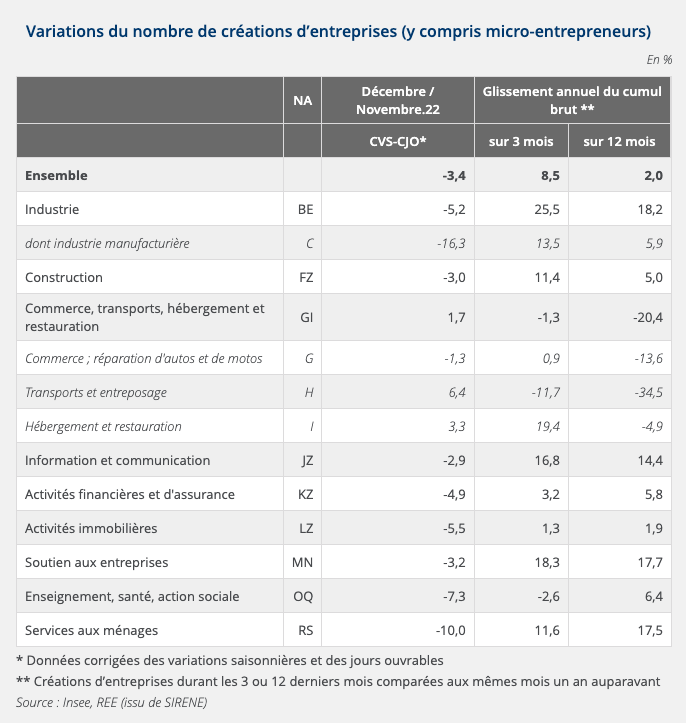Selon les dernières données de l’Insee, 1,072 million de créations d’entreprises ont été enregistrées en 2022, dépassant le niveau record de 2021. Les créations de sociétés et de microentreprises sont en hausse, tout comme l’âge moyen des nouveaux entrepreneurs. L’entrepreneuriat compte également de plus en plus de femmes. Bilan de l'année 2022 en quelques chiffres.
Les créations de sociétés en nette augmentation
Pour la deuxième année consécutive, le nombre de créations d’entreprises a atteint un record en 2022, dépassant le cap symbolique du million d’immatriculations. 1,072 million d’entreprises ont été créées en 2022 contre 1,05 million en 2021, soit une hausse de 2 % sur un an.
La tendance s’est encore accentuée au cours du dernier trimestre 2022, avec une hausse du nombre de créations d’entreprises de 8,5 % par rapport au dernier trimestre 2021.
Si le régime de la microentreprise rencontre toujours un franc succès, représentant 61 % des créations d’entreprises en 2022, les créations de sociétés sont elles aussi en augmentation. Sur l’ensemble de l’année, les créations de sociétés ont augmenté de 4,8 %, contre une hausse de 2,8 % pour les créations de microentreprises. En revanche, le nombre de créations d’entreprises individuelles classiques est en net recul (-7,4 %).
En 10 ans, les créations de sociétés ont presque été multipliées par deux : 293 400 sociétés ont vu le jour en 2022, contre 163 400 en 2012. Les sociétés par actions simplifiées (SAS) séduisent aujourd’hui davantage les nouveaux entrepreneurs que les sociétés à responsabilité limitée (SARL), ces dernières représentant dorénavant les deux tiers des créations de sociétés.
De nouveaux entrepreneurs plus âgés, et davantage de femmes
L’Insee relève toutefois des différences entre les secteurs d’activité. Si les activités de conseil, de loisirs, d’art et de spectacle ont attiré de nombreux entrepreneurs en 2022, avec une hausse de 25 % des créations d’entreprises, les immatriculations dans le secteur des transports et entreposage ont chuté de 34,5 %. Dans les secteurs de l’industrie et de l’artisanat, on note en revanche un réel dynamisme, avec une augmentation de 18 % du nombre de créations d’entreprises.
Après l’essor des créations dans le secteur des transports durant la pandémie de Covid-19, le nombre de radiations reflète lui aussi la fin d’une période : elles ont augmenté de 33 % dans ce secteur, contre une hausse plus modérée de 17 % dans les secteurs des services, de l’enseignement et de la santé.

La vitalité des créations dans le transport était essentiellement due aux microentreprises, lancées par des entrepreneurs de 31 ans en moyenne. Le recul de ces microentreprises entraîne donc mécaniquement une augmentation de l’âge moyen des nouveaux entrepreneurs, qui est aujourd’hui de plus 40 ans après être resté en dessous de ce seuil durant des années.
Par ailleurs, le nombre de femmes créatrices d’entreprises progresse : elles représentent actuellement 55 % des créateurs d'entreprises individuelles, et 43 % des créateurs de microentreprises. Elles restent toutefois minoritaires parmi les créateurs de sociétés, avec une part de 33,4 % tous secteurs confondus. Si elles représentent 53,9 % des dirigeants de sociétés dans les services et 47,6 % dans l’enseignement, la santé et l’action sociale, cette part chute à 8,8 % dans le secteur de la construction, et à 10,5 % dans le secteur des transports.
